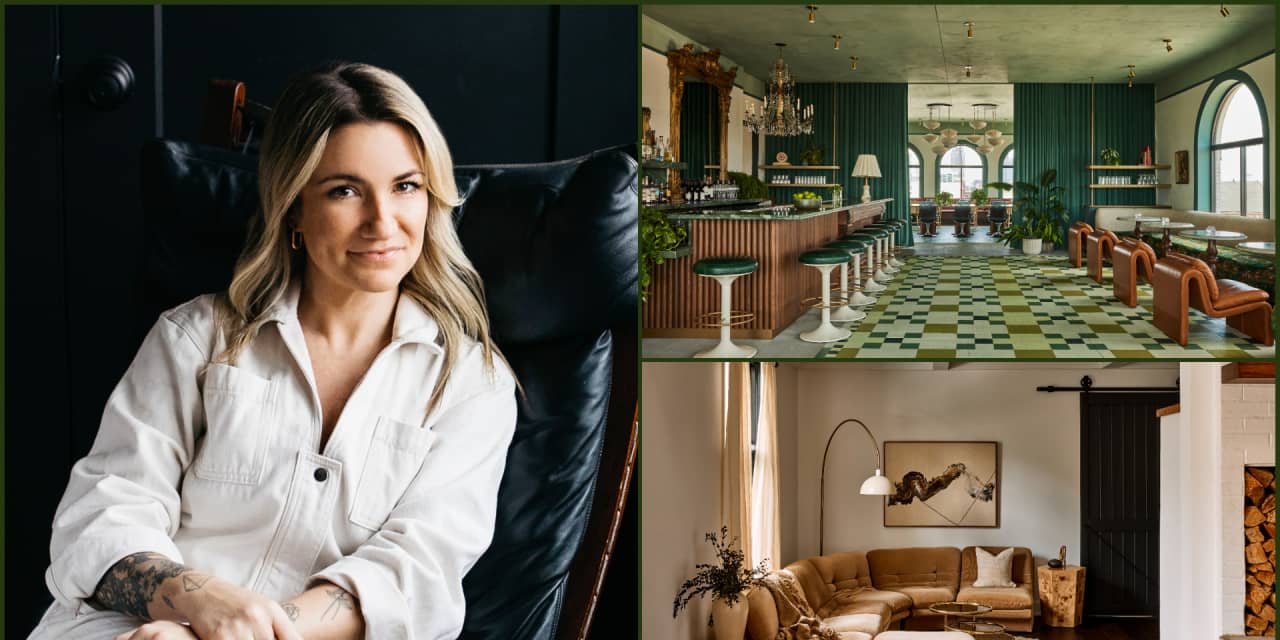
Kate Rohrer’s hotel and restaurant designs have become the best advertising for her residential practice.
“What seems to be happening, over 10 years of client relationships, is that we work on a hospitality project, form a connection, and the client asks us to design a house,” said Rohrer, the founder of Rohe Creative in Philadelphia.
“We ended up designing [chef and restaurateur] Michael Schulson’s home after working on [eateries] Double Knot and Harp & Crown for him,” she said. “[Director] M. Night Shyamalan would come into a lot of the Philadelphia restaurants we designed, liked what he saw, and asked us to work on his [Willistown, Pennsylvania] estate, which we’re still working on.”
More: Muhammad Ali’s Knockout Former Los Angeles Mansion Is Going to Auction
Headquartered in Philadelphia’s hip Fishtown neighborhood, Rohe Creative’s team of six has worked on hospitality projects “all across the U.S.,” Rohe said, including hotels in Miami and Detroit. Interior Design magazine lauded the firm’s 2023 design for Louisville’s Hotel Genevieve as “a playful mash-up of French modernism, old-world charm, and contemporary trends.”
Rohrer talked to Mansion Global about how design can reflect a life, why clients shouldn’t think about a home’s resale value, and why luxury is freedom of choice.
Mansion Global: What connects your hospitality and residential designs?
Kate Rohrer: Hospitality design is my first love. I love that there’s a strong conceptual narrative behind each space. We get to dive into these worlds to tell a unique story and make sure it comes through in design, color, fabrics and finishes. Now, that’s overlapping into the residential world. Your home is a unique narrative of you, your family and your children.
We also have access to sources that a purely residential designer wouldn’t, including custom case goods and vendors of fabrics and wall treatments with more commercial applications. Residential owners get excited when they learn about these sources. It might be a floor that holds up longer, or a finish that lasts longer.
How can someone tell their own story through their décor if they don’t have the budget to work with a designer?
It’s similar to personal style in fashion. What are those choices you’re making each day? What colors do you feel good in? What excites you? Is it different patterns? Bold colors? Neutral palettes?
Get in touch with the things that make your heart sing. It doesn’t have to be permanent, either. We always encourage people to take bite-size pieces. You don’t have to paint your entire living room red. You can add a small red pillow, vase or accent blanket.
Have you ever pushed back on a client’s choices, like something so personal that it might affect their home’s resale value?
If someone’s investing in a home they see their family living in for a long time, discussions about resale don’t come up. But in homes with unique personalities, we always encourage clients and support their choices. A vanilla home, with everything in beige and gray, looks like every other property.
What does Philadelphia offer in terms of sourcing?
We have so many amazing craftspeople and antique dealers here, including [handmade furniture and cabinet maker] Workerman Studios, [custom ironworkers] Holzman Iron Studio and [lighting designers] RTO Lighting. For antiques, we love [architectural salvage dealers] Provenance, Kamelot Auctions, [20th-century furniture dealers] the Modern Republic and [vintage design shop] Betsu Studio.
What’s the biggest change you’ve seen among clients and their preferences since you started the business a decade ago?
The biggest difference is that people are more mindful of the choices they have, and more grateful about it. Ten years ago, people were in this world of watching home-renovation shows and living inside a box of “this is what I can do, because this is what’s been done.” People are owning it more. They’re honing in on making cool, unique decisions especially for themselves. Maybe it’s because we survived Covid and people really want to live.
How does Philadelphia inspire you and your work?
Philadelphia’s an amazing space for creativity. I grew up outside Philadelphia and went to college here. I’ve watched it grow into this incredible creative community, but it also feels approachable, warm and welcoming. In bigger cities, those communities are large and maybe unapproachable. And from a financial perspective, running a business here is less expensive than New York or L.A. The beautiful studio space we have would cost five times as much.
What’s the biggest mistake you see in home décor and design?
The No. 1 thing is being too afraid to really try anything and being really vanilla about design. Home Depot and Lowe’s have a purpose and a place, but people treat them as one-stop shops and buy everything there, which is usually not a successful story.
A lot of people also fall in love with styles, colors and patterns, which is great. But you have to make sure you’re not doing [that] pattern or color on every single surface. People often don’t edit themselves enough to let that special color or pattern be celebrated.
What’s your personal definition of luxury?
For me, the ultimate luxury is freedom of choice. It’s the choice to be mindful in your decisions, being true to yourself and understanding what makes your space feel great to you.
This interview has been edited for length and clarity.
